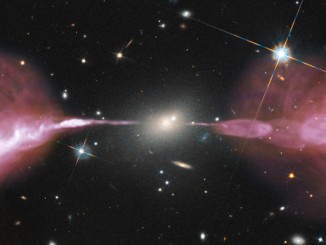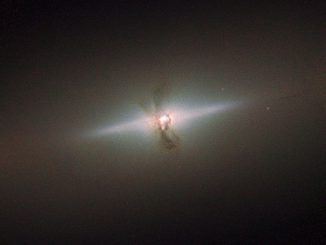Some 45 light years from Earth, the galaxy NGC 4051 was discovered in the constellation Ursa Major by John Herschel in 1788. It is part of a spiral-rich subset of the Virgo supercluster of galaxies that includes the Milky Way. Classified as a Seyfert galaxy, NGC 4051 hosts a supermassive black hole in its core with 1.7 million times the mass of the Sun. Multiple supernovae blasts have been observed in the galaxy over the past several decades, the first in 1983 and the most recent in 2010 when the core of a massive star that had already lost its outer layers of hydrogen and helium exploded in a type 1c supernova. Such explosions are sometimes referred to as stripped core-collapse supernovae. This beautifully rendered view of NGC 4051 was captured by the Hubble Space Telescope.




